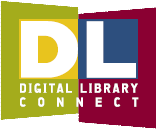Home
What is EDM?
Research
.:: Research Proposal Abstract
Xu, B., and Recker, M. (2011). Understanding Teacher Users of a Digital Library Service: A Clustering Approach. Journal of Educational Data Mining
Xu, B., Recker, M., & Hsi, S. (2010). The data deluge: Opportunities for research in educational digital libraries. In C. M. Evans (Ed.). Internet issues: Blogging, the digital divide and digital libraries. Hauppauge, NY: Nova Science Publishers.
Conference Presentation
Recker, M., Xu, B., Hsi, S., and Garrard, C. (2010). Where in the world? Demographic patterns in access data [PDF]. Poster presented at the third Annual Conference on Educational Data Mining, June 11-13, Pittsburgh, PA.
Xu, B., and Recker, M. (2010). Peer Production Of Online Learning Resources: A Social Network Analysis [PDF]. Poster presented at the third Annual Conference on Educational Data Mining, June 11-13, Pittsburgh, PA.
Recker, M., Hsi, S., Xu, B., & Rothfarb, R. (2009, November). Educational data mining approaches for digital libraries. Poster presented at the NSDL Annual Meeting 2009, Nov 17-19, Washington D.C.
Recker, M., Xu, B., & Palmer, B. (2009, November). Diving into data: Web metrics and educational data mining to evaluate digital libraries. National Science Foundation National STEM Digital Library Annual Meeting 2009, Washington D.C.
Technical Report
Palmer, B. C., & Recker, M. (2009). Applying web usage mining to an educational digital library service.
Submissions
Xu, B., & Recker, M. (2011). Teacher Analytics: A Clustering and Triangulation Study of Digital Library User Data. Paper under review
Hsi, S., Diekema, A., Xu, B., & Recker, M. Searching Online Science Museums: Lessons from Analyzing Queries to a Digital Library. Submitted to Museums & the Web. 2012.
Xu, B., Recker, M., Qi, X, (2011).Clustering Educational Digital Library Usage Data: A Comparison of Latent Class Analysis and K-Means Algorithms. Under Review.
 *****************************************************
*****************************************************
Collaborative Research: Educational Data Mining Approaches for Digital Libraries
NSF 0840745
Much work over the past decades has focused on developing algorithms and methods for discovering patterns in large datasets, known as knowledge discovery from data (KDD). Webmetrics, the application of KDD to web usage data has been growing rapidly in areas such as e-commerce. However, the field of educational data mining (EDM) is just beginning to emerge in analyzing and understanding the massive, longitudinal user data that are captured in online learning environments, and educational digital libraries in particular.
The primary goal of this targeted research project is to investigate how digital library and learning resources can be instrumented in order to apply web usage data mining strategies and EDM. It will examine how these results can be combined with traditional evaluation data (e.g., surveys, interviews) as part of a comprehensive evaluation strategy to better understand science teacher behaviors, motivations, and learning experiences. More broadly, these findings will help inform design changes in digital library collections, tools, and services in the NSDL and beyond.
The Exploratoriumís Learning Resources Collection (ELRC) and the Instructional Architect (IA) at Utah State University will be the two active test beds in which EDM methods will be applied to web usage data both retrospectively as well as instrumented for downstream data capture and future analyses. In this way, the test beds represent a digital library and a digital library service.
The proposed project consists of four key objectives:
- Review Metrics and Models: Through continuing literature reviews and surveys of NSDL projects engaged in webmetrics, we will identify core measures and webmetrics in use. We will also identify candidate data mining tools and statistical techniques that can be applied to such large and longitudinal datasets.
- Identify Usage Patterns: Via two, data-driven, iterative cycles, each test bed will collect webmetrics data, analyze emerging user classes via EDM, then refine and revise models and webmetrics data collection procedures.
- Examine data combination methods: Results from Objective 2 will be combined with previously collected traditional evaluation data (e.g., user surveys and interviews) for triangulation and complementarity purposes in order to examine STEM teacher behaviors and learning in educational digital libraries.
- Identify and Document Strengths and Weaknesses: We will document strengths and weaknesses in the educational data mining models and approaches as they arise. We will identify what new questions about DL usage can be addressed by combining EDM and traditional evaluation methods. We will document which procedures emerge that are generally applicable to the study of educational digital libraries.
Intellectual Merit. This proposal contributes new interdisciplinary knowledge on Knowledge Discovery from Data and the application of Educational Data Mining to digital libraries. Newly applied and explored methods and techniques for combining traditional evaluation data with webmetrics and EDM methods will advance the understanding of user behaviors and learning. This work also contributes to growing research on teacher learning using cyber-enabled approaches.
Broader Impacts. The outcomes of this targeted research will provide a set of strategies and methods for conducting online evaluation of digital libraries, including combination with traditional evaluation data, and identification of strengths and weaknesses of particular educational data mining approaches. This project will also inform future system design and configuration to enable the application of educational data mining of digital libraries to better understand and meet the needs of end users within and beyond the NSDL community. This includes informing improvements in the design of the user experience, as well as tailored teacher professional development. Finally, this research will contribute to emerging cyber-infrastructures for education. top
Putting EDM into Practice
Use the tabs below to look into how to use EDM in your projects.
About Us
 .:: The Lawrence Hall of Science .:: The Instructional Architect .:: Our people .:: Contact us |










